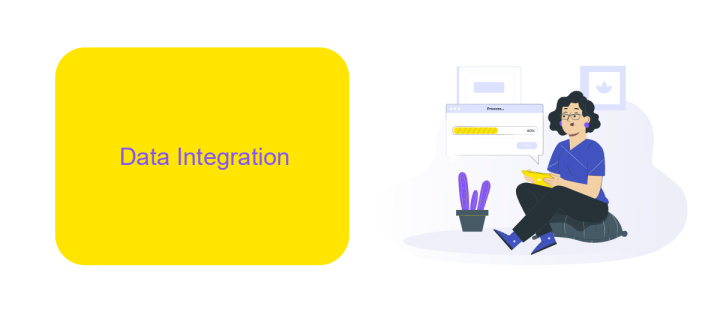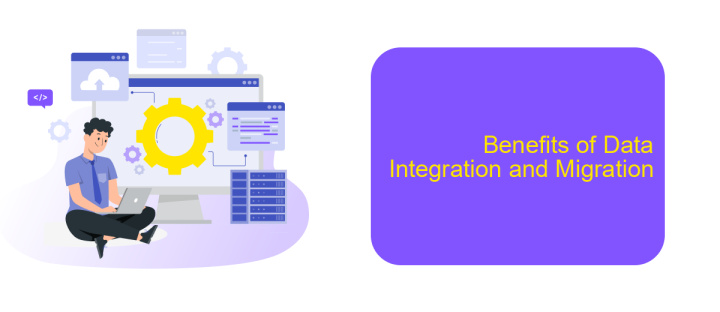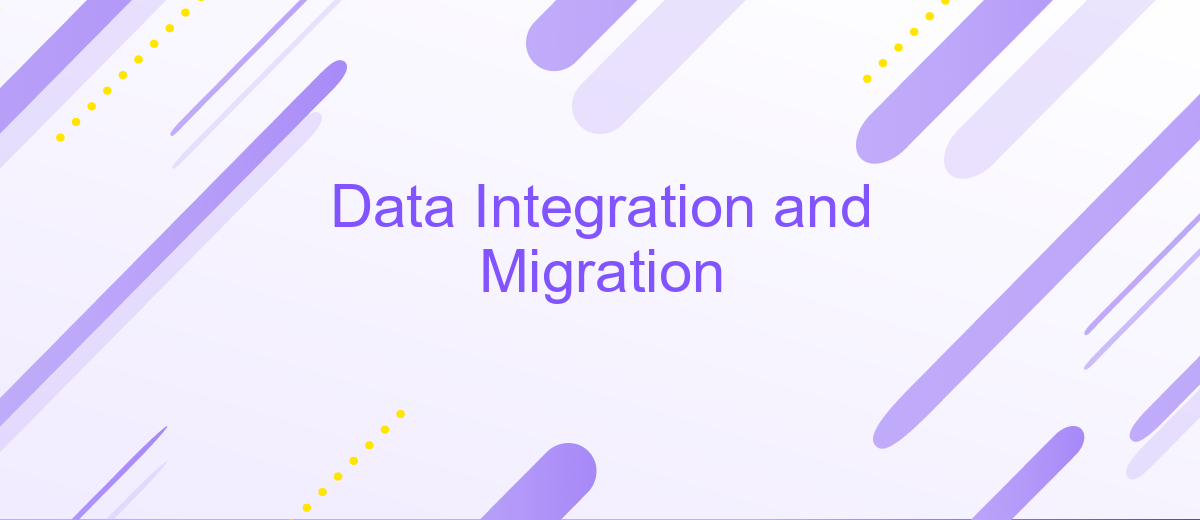Data Integration and Migration
Data integration and migration are critical processes in today's data-driven world, enabling organizations to consolidate information from diverse sources and move it across systems seamlessly. These processes ensure data consistency, improve accessibility, and support informed decision-making. In this article, we will explore the key concepts, challenges, and best practices for effective data integration and migration.
Introduction
Data integration and migration are critical processes in the modern digital landscape, enabling organizations to consolidate and utilize data from various sources effectively. These processes ensure that data is seamlessly transferred, transformed, and made accessible across different systems, enhancing operational efficiency and decision-making capabilities.
- Data Integration: Combining data from different sources into a unified view.
- Data Migration: Moving data from one system to another, often during upgrades or cloud transitions.
- Tools and Services: Utilizing platforms like ApiX-Drive to automate and streamline data workflows.
ApiX-Drive is a powerful tool that simplifies the integration and migration process by providing automated solutions for data transfer and synchronization. It supports a wide range of applications, ensuring that your data is consistently up-to-date and accessible. By leveraging such tools, organizations can reduce manual efforts, minimize errors, and achieve more reliable data management, ultimately driving better business outcomes.
Data Integration

Data integration is the process of combining data from different sources to provide a unified view. This is crucial for businesses that rely on accurate and comprehensive data to make informed decisions. Effective data integration ensures that data from various systems, such as databases, CRM systems, and external data sources, is harmonized and accessible. This harmonization can be achieved through various methods, including ETL (Extract, Transform, Load) processes, data warehousing, and real-time data integration tools.
One of the key tools that facilitate seamless data integration is ApiX-Drive. ApiX-Drive simplifies the integration process by offering an intuitive platform that connects various applications and automates data flows between them. This service allows businesses to quickly set up integrations without the need for extensive coding or technical expertise. By leveraging such tools, organizations can ensure that their data is consistently up-to-date and readily available for analysis, leading to more efficient operations and better decision-making.
Data Migration

Data migration is a critical process in any digital transformation strategy, involving the transfer of data between different storage types, formats, or systems. This process ensures that data is accurately and securely moved, maintaining its integrity and usability in the new environment. Effective data migration minimizes downtime and disruptions, allowing businesses to continue their operations smoothly.
- Planning: Define the scope, timeline, and resources required for the migration.
- Data Assessment: Evaluate the quality and structure of the data to be migrated.
- Mapping and Transformation: Align data from the source to the destination format.
- Testing: Conduct thorough testing to ensure data accuracy and integrity.
- Execution: Perform the migration process, often in phases to minimize risk.
- Validation: Verify that the migrated data meets all requirements and is fully functional.
Using tools like ApiX-Drive can simplify the data migration process by automating data transfers between various platforms. With its user-friendly interface and robust integration capabilities, ApiX-Drive ensures that data is seamlessly moved without compromising on security or efficiency. This allows businesses to focus on leveraging their data for strategic insights rather than worrying about the complexities of migration.
Benefits of Data Integration and Migration

Data integration and migration are essential processes for modern businesses aiming to streamline their operations and enhance decision-making capabilities. By consolidating data from multiple sources into a single, unified system, organizations can achieve a more comprehensive view of their operations, leading to better insights and more informed decisions.
One of the primary benefits of data integration and migration is the elimination of data silos, which can hinder collaboration and productivity. By integrating disparate data sources, companies can ensure that all departments have access to the same information, fostering a more collaborative and efficient work environment.
- Improved data accuracy and consistency
- Enhanced decision-making capabilities
- Streamlined business processes
- Reduced operational costs
- Increased agility and scalability
Tools like ApiX-Drive facilitate seamless data integration and migration by automating the process of connecting various applications and services. This not only saves time but also reduces the risk of errors, ensuring that data is accurately transferred and readily available for analysis. By leveraging such tools, businesses can focus on their core activities while maintaining a robust and integrated data infrastructure.


Challenges and Best Practices
Data integration and migration present several challenges, including data inconsistency, data loss, and system compatibility issues. Ensuring data quality during migration is crucial, as poor data can lead to erroneous business decisions. Additionally, managing different data formats and structures from various sources complicates the integration process. Security concerns also arise, particularly when dealing with sensitive information, requiring robust encryption and access controls.
To address these challenges, adopting best practices is essential. Begin with a detailed assessment of data sources and establish clear data governance policies. Utilize automated tools like ApiX-Drive to streamline data integration, reducing manual errors and saving time. Implement incremental data migration to minimize downtime and ensure continuous business operations. Regularly monitor and validate data to maintain accuracy and integrity. Lastly, ensure comprehensive training for staff to handle new systems and processes effectively.
FAQ
What is data integration and why is it important?
What are the common challenges in data migration?
How can I ensure data quality during integration and migration?
What steps are involved in a typical data migration process?
How can automation tools help with data integration and migration?
Apix-Drive is a simple and efficient system connector that will help you automate routine tasks and optimize business processes. You can save time and money, direct these resources to more important purposes. Test ApiX-Drive and make sure that this tool will relieve your employees and after 5 minutes of settings your business will start working faster.

